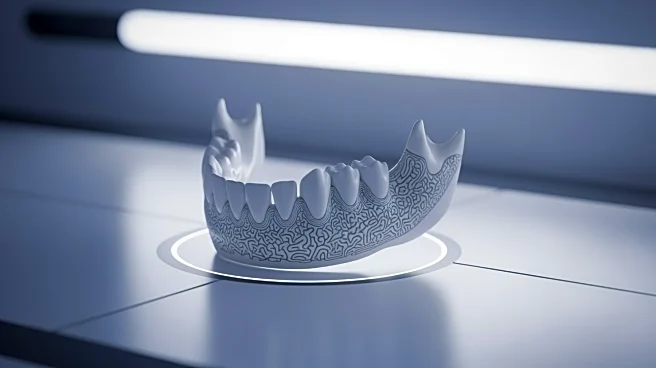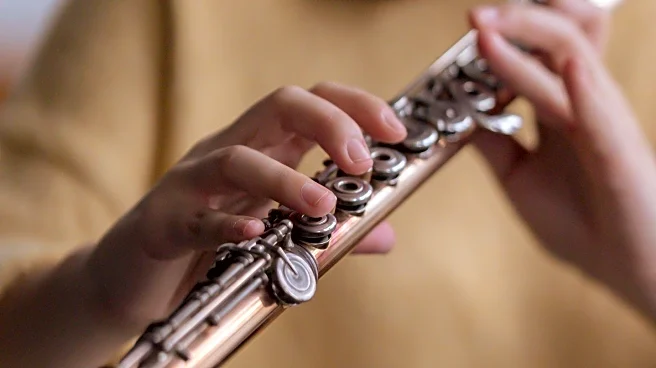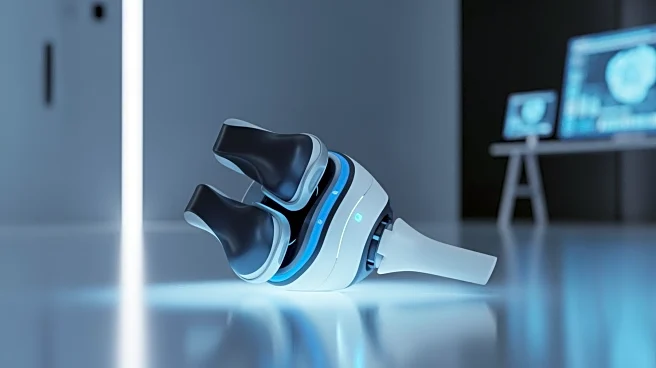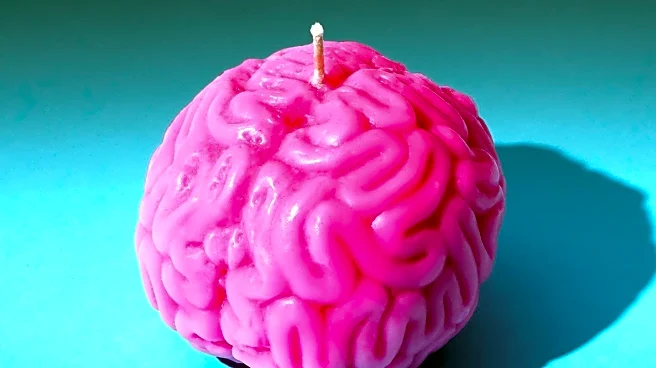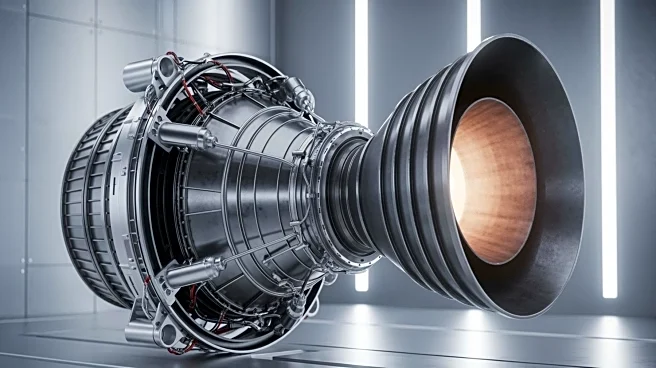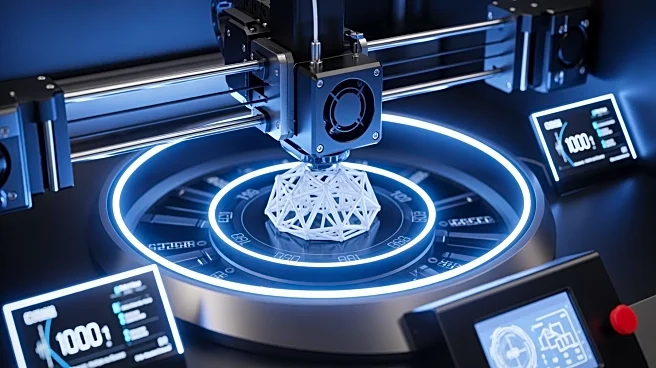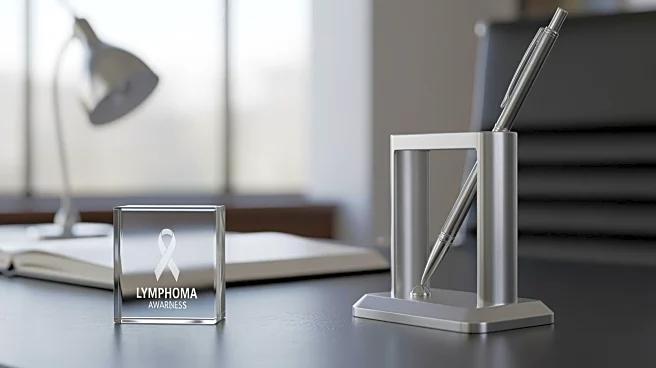What's Happening?
Researchers at the University of Sydney have developed a mechanobiologically-optimized non-resorbable artificial bone designed for patient-matched scaffold-guided bone regeneration. The study involved
mature female sheep due to their anatomical similarities to humans, particularly in the mandible. The artificial bone consists of a PIII-treated LS-PEK frame, an internal βTCP lattice, and a LS-PEK crossbar. The design aims to fill mandibular defects with a scaffold that supports tissue integration and vascularization. The study utilized advanced 3D modeling and printing techniques to create implants that match the anatomical features of the sheep mandible, ensuring symmetry and anatomical accuracy. The research highlights the potential for these implants to be used in oncological jaw reconstruction, providing a stable and biocompatible solution for bone regeneration.
Why It's Important?
This development is significant as it offers a promising solution for jaw reconstruction, particularly in cases involving critical-sized defects common in oncological surgeries. The use of mechanobiologically-optimized artificial bone could improve patient outcomes by providing a stable and biocompatible scaffold that supports tissue integration and vascularization. This innovation has the potential to advance the field of reconstructive surgery, offering new possibilities for treating complex bone defects. The research also underscores the importance of using animal models that closely mimic human anatomy, which can lead to more effective and translatable medical solutions.
What's Next?
The next steps involve further testing and refinement of the artificial bone design to ensure its effectiveness and safety in human applications. Researchers may explore clinical trials to evaluate the performance of these implants in human patients, particularly those undergoing jaw reconstruction due to cancer. Additionally, the study opens avenues for exploring similar mechanobiologically-optimized solutions for other types of bone defects, potentially expanding the application of this technology in orthopedic and reconstructive surgery.
Beyond the Headlines
The ethical considerations of using animal models in research are highlighted, as the study involved mature sheep due to their anatomical similarities to humans. The research also emphasizes the importance of advanced 3D modeling and printing techniques in creating patient-specific implants, which could lead to personalized medical solutions. The development of non-resorbable artificial bone raises questions about long-term biocompatibility and the potential for these materials to integrate with human tissue over time.
